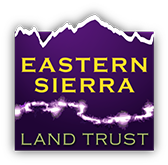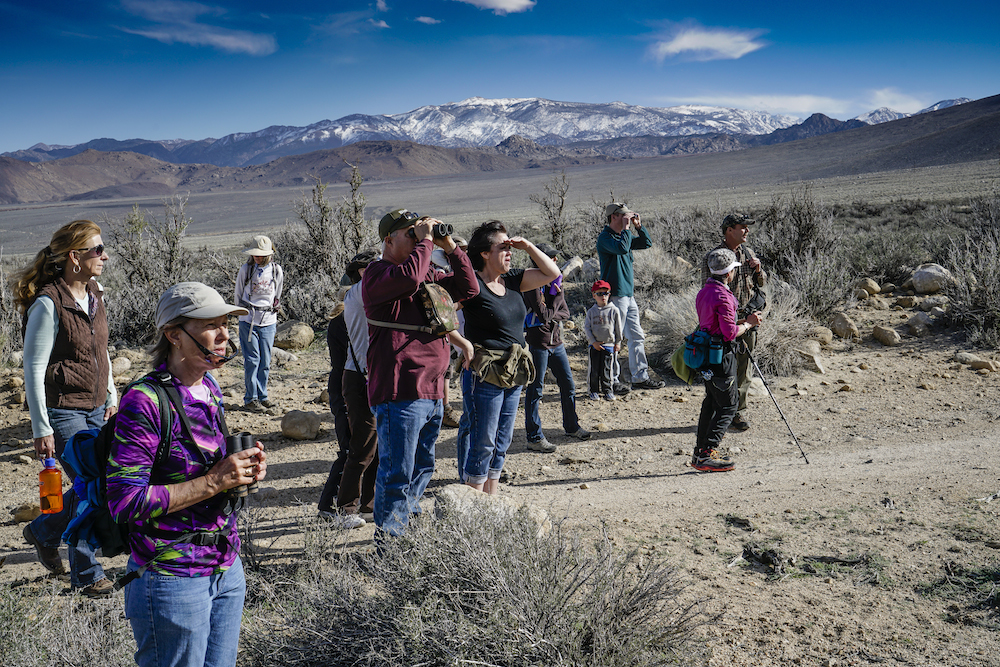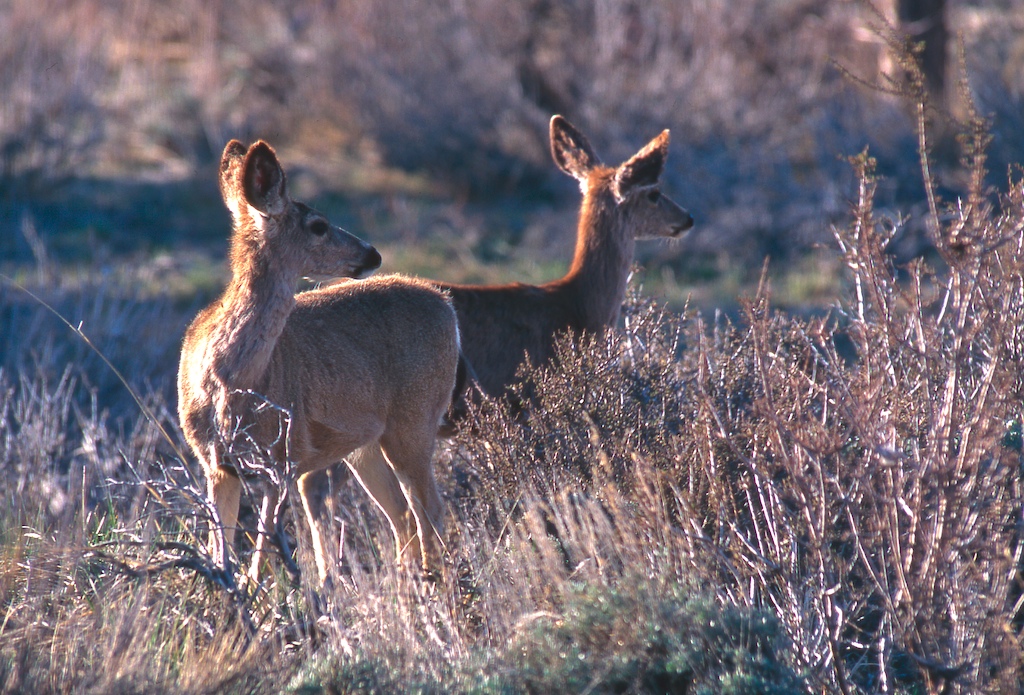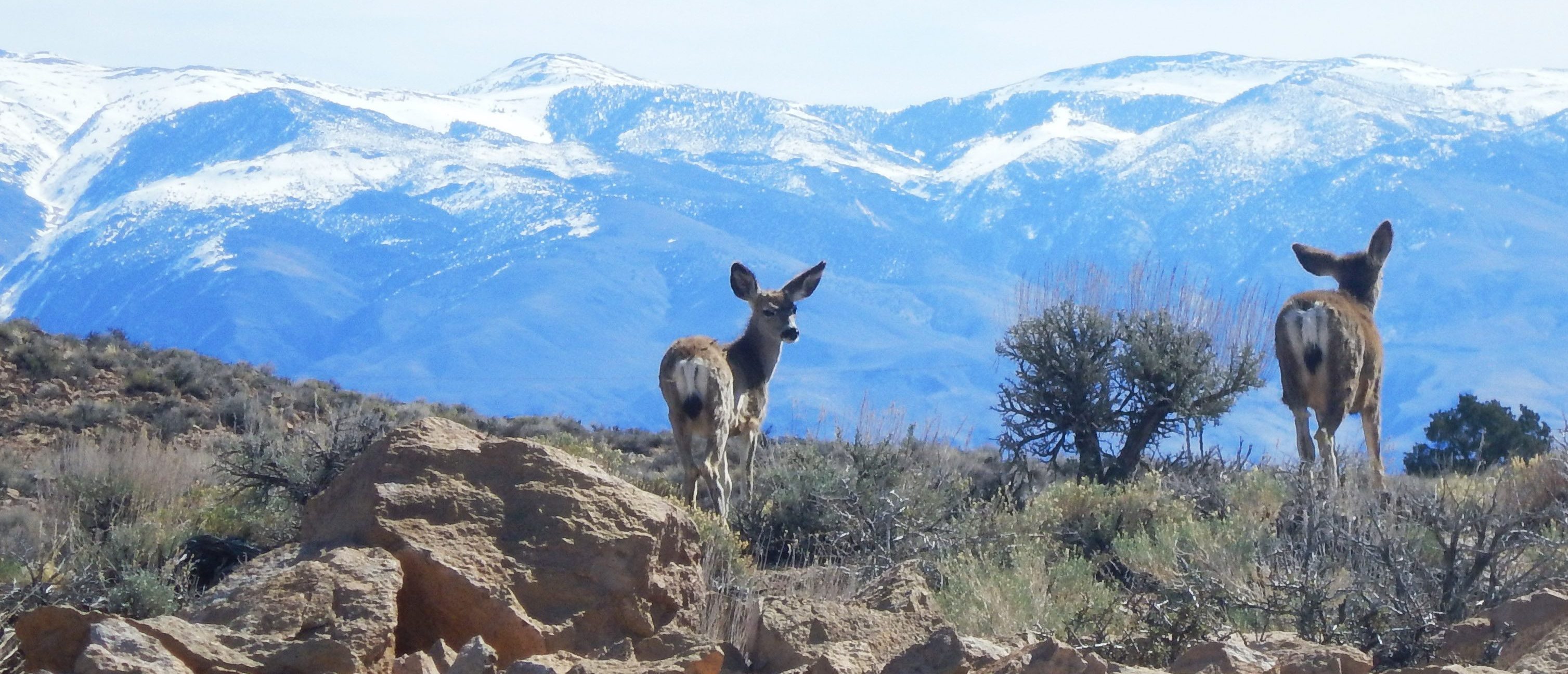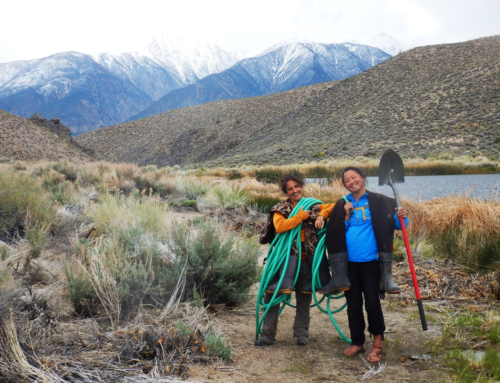Mule Deer Migration Corridor Field Trip
Saturday, March 10th from 2 – 5 pm
(Note: Due to weather, this event has been rescheduled from its original date of March 3.)
RSVP required; to learn more and reserve your spot, please contact Ryan, ESLT’s Education Coordinator and AmeriCorps Member, at (760) 873-4554 or .
This time of year, many animals who call our side of the Sierra home are preparing for a journey. Most are searching for the simple things in life; food, shelter, and a place to raise their young. Our local Round Valley mule deer are no exception. And with spring around the corner, it’s time for them to hit the trails and head into the mountains.
Mule deer have two homes in the Eastern Sierra, and travel between them each spring and fall. Soon the Round Valley herd will be leaving their winter residence in the lower elevations for their summer range in the beautiful mountain meadows.
Along their journey, they will follow the same route that countless generations have taken before them. These “animal highways” used by mule deer and other species are what biologists call a migration corridor.
The herd will need to overcome obstacles both old and new if they wish to reach the green forage of the mountain meadows this summer. The majority of the herd travels north from Round Valley each spring through the community of Swall Meadows. Here, they must pass through a narrow, 1-mile-wide bottleneck between the steep cliffs of Wheeler Ridge to the west and the deep canyon of Lower Rock Creek Gorge to the east. With no other way around, the mule deer become more vulnerable to predators and other dangers that may be waiting.
Traveling through this cramped corridor has become more challenging in recent years. As they pass through the bottleneck around Swall Meadows, the herd must navigate increasingly populated communities and cross busy roadways.
Adding to their challenges, long periods of drought, heavy winters, and wildfires have made food and shelter harder to come by. As these “strange” weather conditions become the new normal in California, mule deer are forced to adapt.

Mule Deer on ESLT’s Naylon Conservation Easement, one of the conserved properties in the migration corridor. © Lee Naylon
Concerned about the growing threats to mule deer and other wildlife that use this migration corridor, a group of local community members came together in 2001 and formed what was to become Eastern Sierra Land Trust. Since then, ESLT has helped landowners in the Swall Meadows area conserve 269 acres of private land along the mule deer’s migration corridor ensuring safe passage for the mule deer as they travel through the area each year.
On Saturday, March 10th from 2 – 5 pm, we invite you to join us as we explore a portion of the Round Valley herd’s migration corridor. Special guest Timothy Taylor from California Department of Fish & Wildlife will be there to share stories and information about our local mule deer and their annual migration.
This is a free, family-friendly event, and everyone is welcome (but please leave dogs at home to increase our likelihood of seeing wildlife).
For more information and to RSVP, contact Ryan, Education Coordinator and AmeriCorps member at , or call (760) 873-4554. We hope to see you there!
